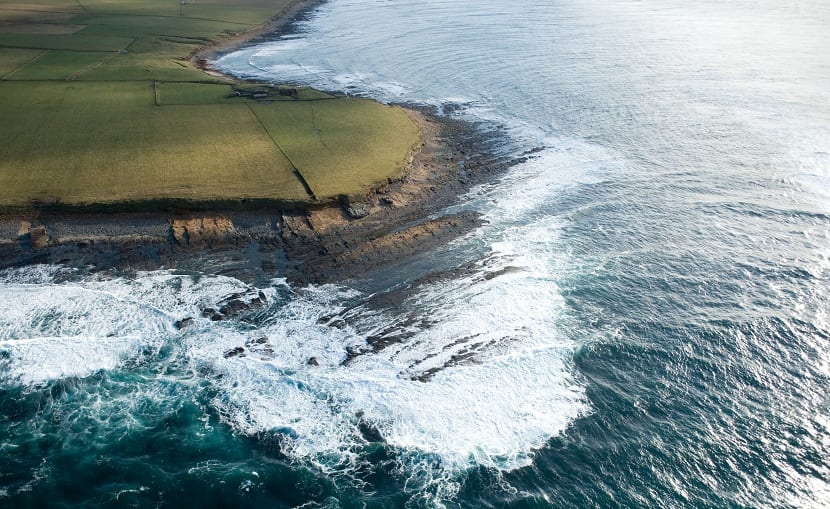
On this planet, everything that moves requires a motor to be moved. That is, a force that impels an object to move, since it would not do it by itself. Something similar happens with ocean currents.
We have always heard about ocean currents. Its effects, importance, influence on the climate, etc. However, we may not really know how these ocean currents are formed. The engine that moves ocean waters are generated by the combined action of wind, tides and the density of water. In addition, these movements cause temperature variations of the water masses of different latitudes and also generate movement. Do you want to know more about ocean currents?
The importance of ocean currents
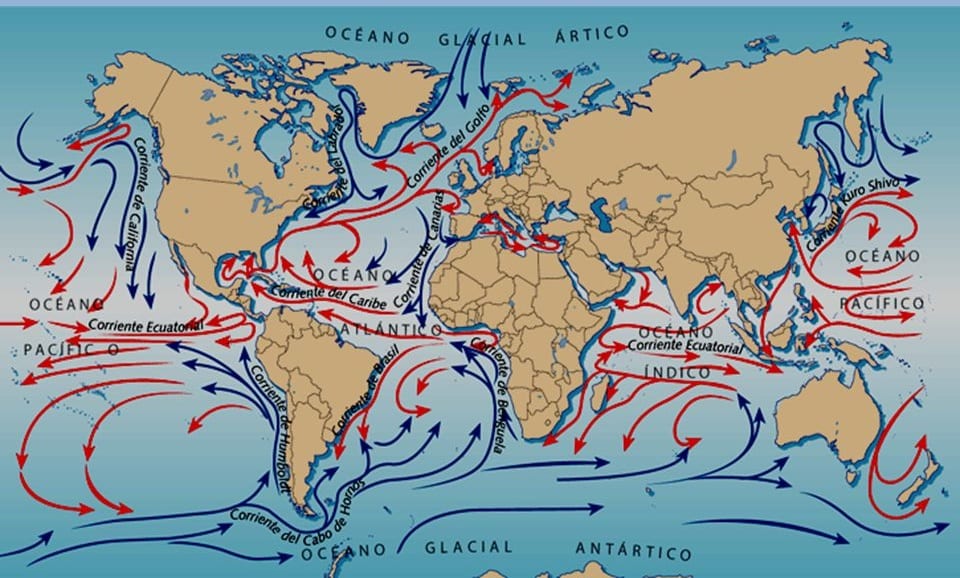
These currents of the water bodies are very important since in the areas where there is more water movement, it is where there is usually more quantity of nutrients and, therefore, of biodiversity. It is thanks to the constant movements by what the waters of the different oceans around the world have preserved their characteristics for millions of years.
Ocean currents not only transport nutrients, but also travel enormous distances carrying heat energy. This helps to the distribution of temperatures, salts and organisms in all corners of the planet. For many living beings that inhabit the oceans, ocean currents are of vital importance for the transport of nutrients, the stability of temperatures and long displacements.
Another importance that they have throughout the planet is that they are great influences on the climate. Marine currents generate rain, meteorological phenomena such as El Niño and many others. In addition, thanks to the ocean currents, the productivity of the waters increases.
How sea currents are formed
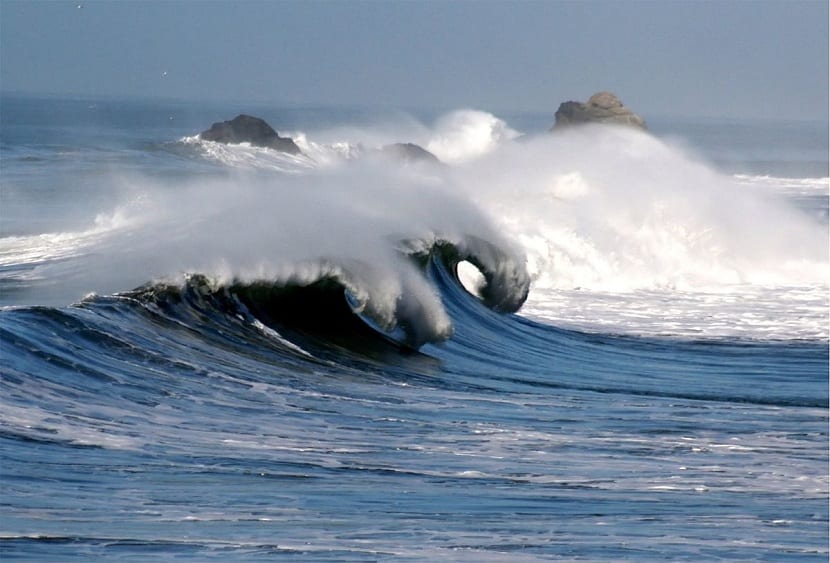
As we have commented before, marine currents are movements of water that occur within the sea and are caused by different elements such as wind, changes in salinity and temperature. These ocean currents can be both shallow and deep due to changes in the density of water.
The surface sea currents are due more to the action of the wind. The wind moves in the direction of those areas where there is a lower amount of atmospheric pressure. Therefore, if the wind displaces ocean currents, these will also move to areas where there is less pressure.
Deep ocean currents are due to changes in temperatures, salinity and density. The densest waters tend to descend to the bottom of the sea. The density of the water depends on the degree of salinity and the temperature. Colder waters are denser and go to the sea floor, displacing other warmer waters to the surface. This movement of the water masses generates the marine currents.
Similarly, those more saline waters are denser and will tend to descend, displacing less dense waters to the surface, generating a movement of water masses.
Surface water currents
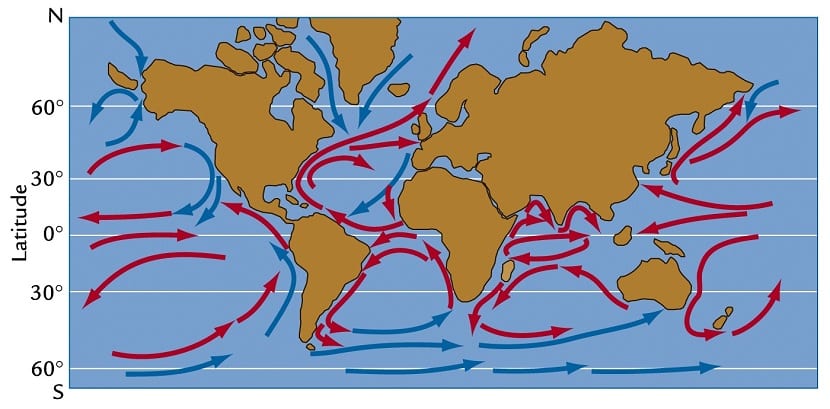
These surface water currents are influenced by the distribution of the continents and the Earth's rotation. The amount of solar radiation that affects the waters and the redistribution of heat also influence the characteristics of these currents.
In the Northern Hemisphere they move in a circular fashion in a clockwise direction. In the Southern Hemisphere they move in a circular fashion in an anti-clockwise direction.
As we have mentioned before, the distribution of nutrients in the waters depends on the marine currents. The trade winds that blow to the west move these currents in that direction, allowing cold, deep waters with a lot of nutrients to rise. These zones constitute the Outcrops. They are areas very rich in fishing, the most important are found on the coasts of Peru and California, in America and on the coasts of the Sahara, Kalahari and Namibia, in Africa.
Deep currents
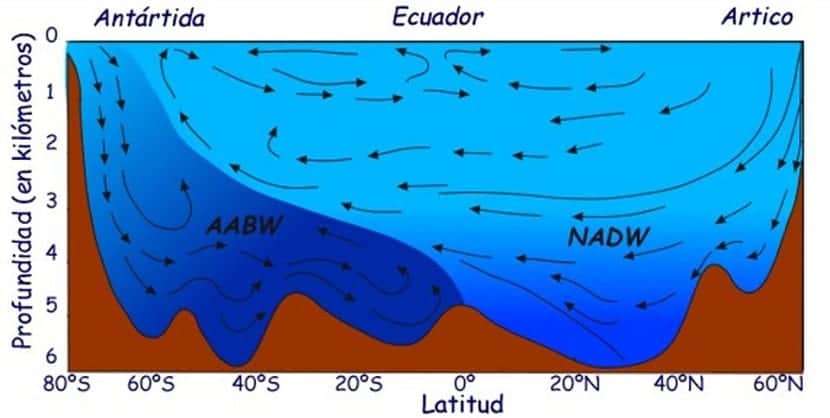
Deep currents are due to differences in temperature and salinity. They are called thermohaline currents. They are usually affected by the topography of the seabed and by the spin of the Earth.
The so-called oceanic conveyor belt takes place in the North Atlantic and generates a current of cold and very saline water, the Arctic current. It sinks deeply moving south. Once past the equator, passing south latitude, the water current rises as it is pushed by another colder water current. That current that hits is the Antarctic current. The movement of these currents is very slow from 2 to 40 cm / s and can have a direction opposite to the surface currents.
When ascending the deep currents the outcrops are produced, where you can have good fishing yields.
Tidal currents
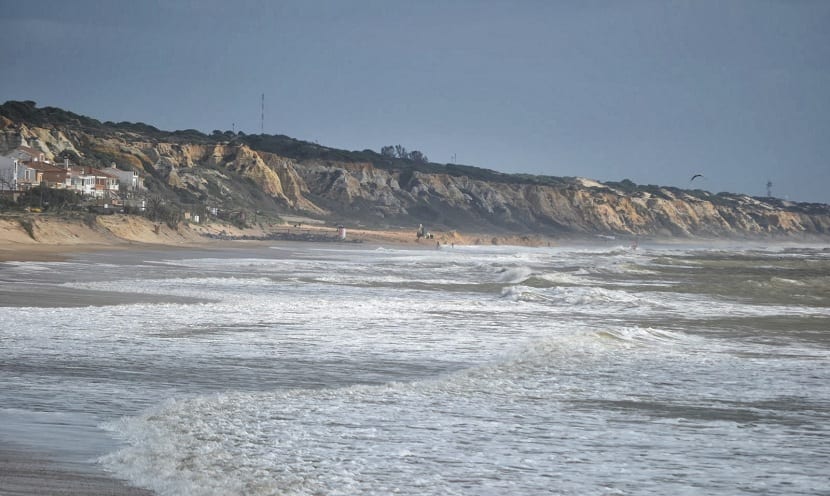
These currents are generated by the movements of the water caused by the attraction of the moon to the Earth and gravity. When the tide rises or falls, the movement of the water generates the currents. These currents are very slow and have little influence on the dynamics of the oceans.
Examples of ocean currents
All over the planet there are ocean currents that stand out for their importance.
Antarctic Circumpolar Current
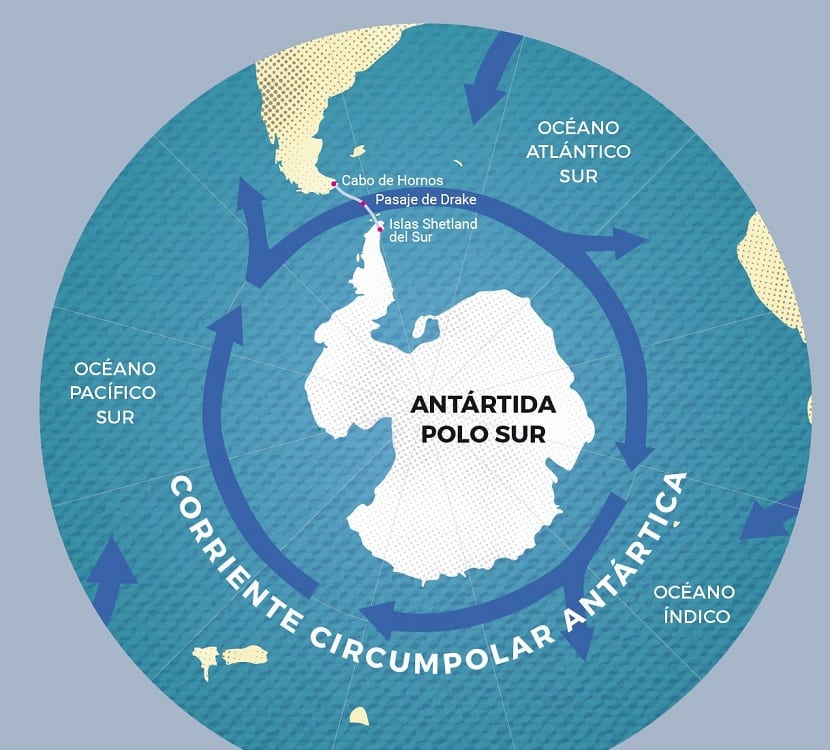
The Antarctic Circumpolar Current is a cold ocean current that flows freely from west to east around Antarctica, in the same direction as the Earth's rotational motion. This is so because this current it does not find any continent in its entire trajectory that interferes with its circulation.
The gulf stream
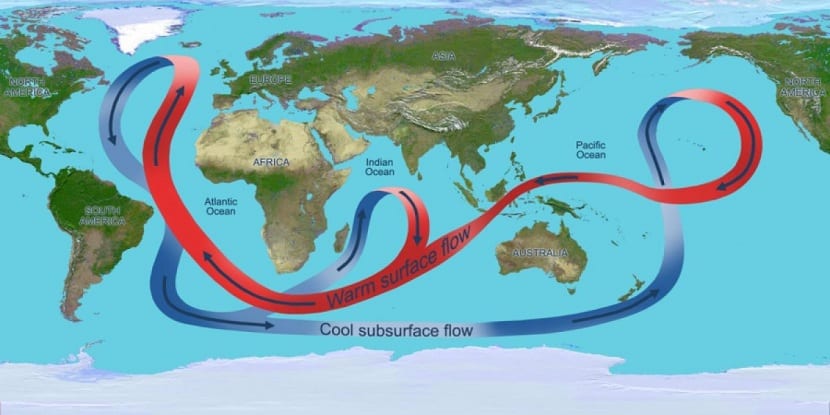
The Gulf Stream has an average width of 80-150km and a depth between 800 and 1200m. The highest velocity is close to the surface and decreases with depth. The maximum speed that the current reaches is 2m / s.
California Current
It is a cold ocean current from the Pacific that flows in a southerly direction along the west coast of North America, closing the circulation of water between 48 ° and 23 ° North latitude. It is due to the ascent of cold water from the depths of the ocean, caused by the diversion to the South of the North Pacific Current.
With this information you can know something more about the importance of ocean currents in our climate and how they are formed.